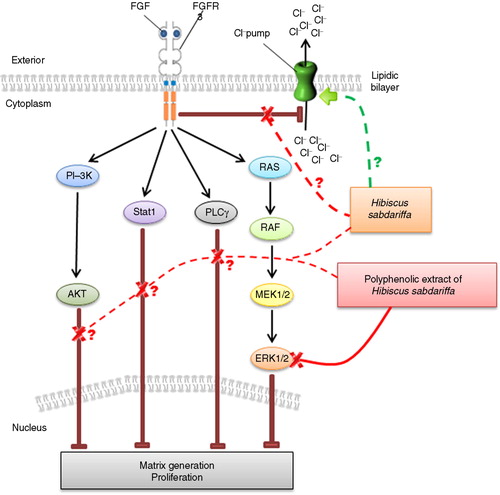Figures & data
Fig. 1 Intracellular chloride accumulation is modulated by polyphenols. Measurements are indicated as percentages with respect to values obtained in wild type cells and the effect of the addition of FGF9 (25 ng/mL; 100%) or the respective controls without FGF9 (0%). Data are expressed as the mean±SD (n=6–9 independent experiments in triplicate), indicating the relative increase or decrease in chloride concentration. (a) Among the different combinations of polyphenols, only those provided by Hibiscus sabdariffa decreased intracellular chloride accumulation. In contrast, all other combinations favored the accumulation of chloride. We decided to exclude these extracts in further analyses, and p values were provided only for H. Sabdariffa. (b) We concentrated this extract to individualize the effect of polyphenols, assessing any potential contribution of residual compounds and organic acids, and the values were compared with those obtained from the initial H. sabdariffa extract. Asterisks denote significant effects with respect to controls.
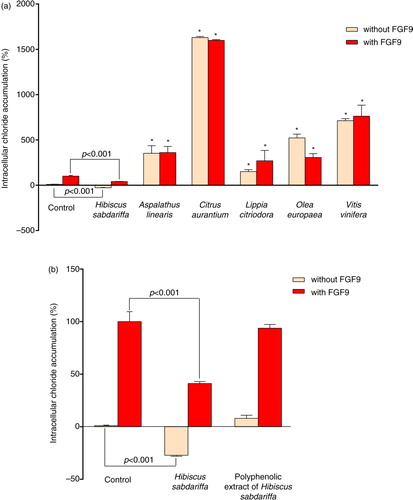
Fig. 2 Relative ERK-1/-2 phosphorylation. Experiments were performed in FGFR3 (G380R) mutant RCJ3.1C5.18 chondrocytes with or without FGF9 (25 ng/mL) and further incubated with Hibiscus sabdariffa or its polyphenolic extract. Data were combined and expressed as the mean±SD (n=6, in triplicate). Representative results were included for illustrative purposes.
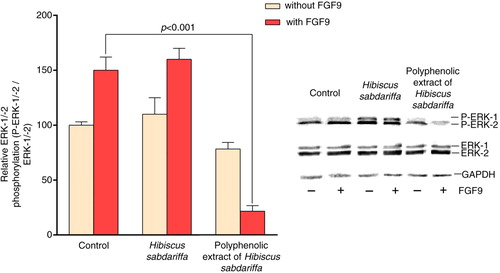
Fig. 3 Extracellular matrix (ECM) deposition. Data were combined and expressed as the mean±SD (n=6, in triplicate), and the values indicate the amount of enrichment in the ECM utilizing Alcian blue staining of cells. Measurements were sequentially performed at days 3, 7, and 10 and included untreated cells (control) and activated cells in the presence of Hibiscus sabdariffa extract or its derived polyphenolic extract with or without FGF9 (25 ng/mL).
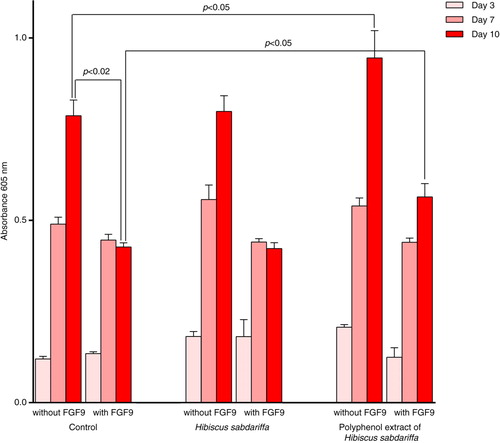
Fig. 4 Chondrocyte proliferation comparing untreated cells (control) and treated cells with Hibiscus sabdariffa and its polyphenolic extract with or without FGF9 (25 ng/mL). Cell viability was determined by the trypan blue method. Data are expressed as mean±SD (n=6, in triplicate).
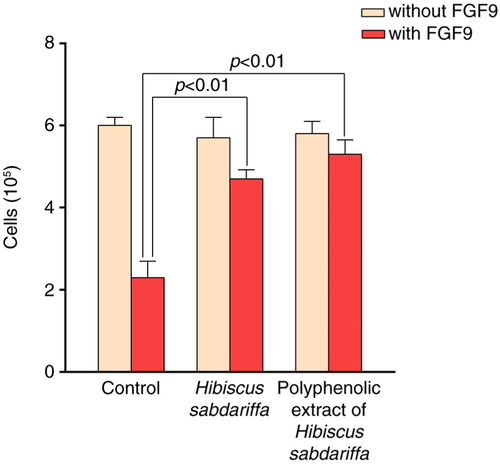
Fig. 5 Illustrative summary of observed and proposed effects in the mutant chondrocyte model. Polyphenols target multiple components that promote and maintain tissue homeostasis beyond their anti-inflammatory and antioxidant effects, and their actions might be extended to disease prevention and intervention. Binding of fibroblast growth factor (FGF9) to its receptor (FGFR3) activates several important signaling pathways that are associated with the overall response to inflammation and are crucial in chondrocytes to regulate cell proliferation and extracellular matrix (ECM) generation. From the data, we consider the possibility that the action of complete Hibiscus sabdariffa extract might be different from that observed with concentrated polyphenols. In particular, polyphenols appear more active in the inhibition of ERK-1/-2 phosphorylation and in the increase of ECM generation, whereas the combination of organic acids and polyphenols could be more active in reversing the intracellular chloride accumulation and increasing cellular proliferation. H. sabdariffa reverses the toxic actions of the FGF9/FGFR3 interaction in mutated chondrocytes. The results indicate the need for a search for human models to fully establish actual mechanisms as well as the potential modification of diets to achieve human health benefits. AKT (PKB): protein kinase B; ERK 1/2 (MAPK): extracellular signal-regulated kinases 1 and 2; FGF: fibroblast growth factor; FGFR: fibroblast growth factor receptor; MEK1/2: MAPK kinases 1 and 2; PI-3K: phosphatidylinositide 3-kinase; PLCγ: phospholipase C gamma; RAF: rapidly accelerated fibrosarcoma (serine/threonine-protein kinase); RAS: rat sarcoma protein (GTPase); STAT1: signal transducer and activator of transcription 1.
